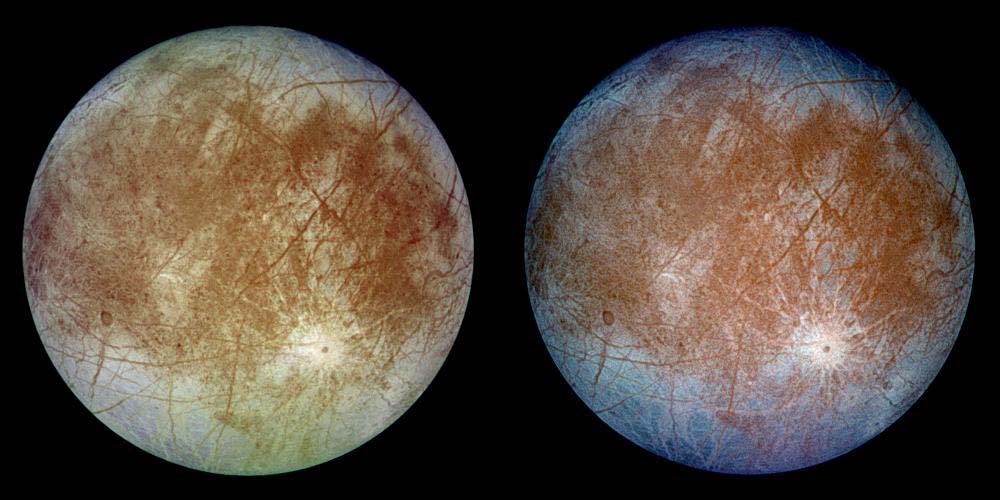Are we alone? Is there life beyond Earth? These are the questions that plague the very essence of science, and in particular, planetary science. Unfortunately, robotic exploration of exoplanetary systems currently remains out of reach due to the literal astronomical distances to get there. For context, our nearest star, Proxima Centauri, is 4.25 light years away, or a mind-blowing 40,208,000,000,000 km (25,000,000,000,000 miles) from Earth. Finding an intelligent civilization might be out of reach for now but searching for any forms of life beyond Earth is very much possible within the confines of our own solar system.
One such notable location to search for life is on Jupiter’s second Galilean moon, Europa. This crater-less ice ball with huge cracks and ridges that run along its surface is long believed to possess a salty liquid water ocean beneath its outer icy shell. Since we don’t know the depth of the liquid ocean, the question then becomes how cold can salty liquid water exist? While the freezing point of fresh water is 0°C (32°F), the freezing point for seawater is actually -2°C (28.4°F). This lower freezing point is due to charged particles known as sodium chloride ions that disrupt the balance of molecules in the water, causing the number of water molecules that hook onto ice molecules to decrease. But determining how low the freezing point in salty water can go will help scientists determine how deep we can explore on Europa to search for life.
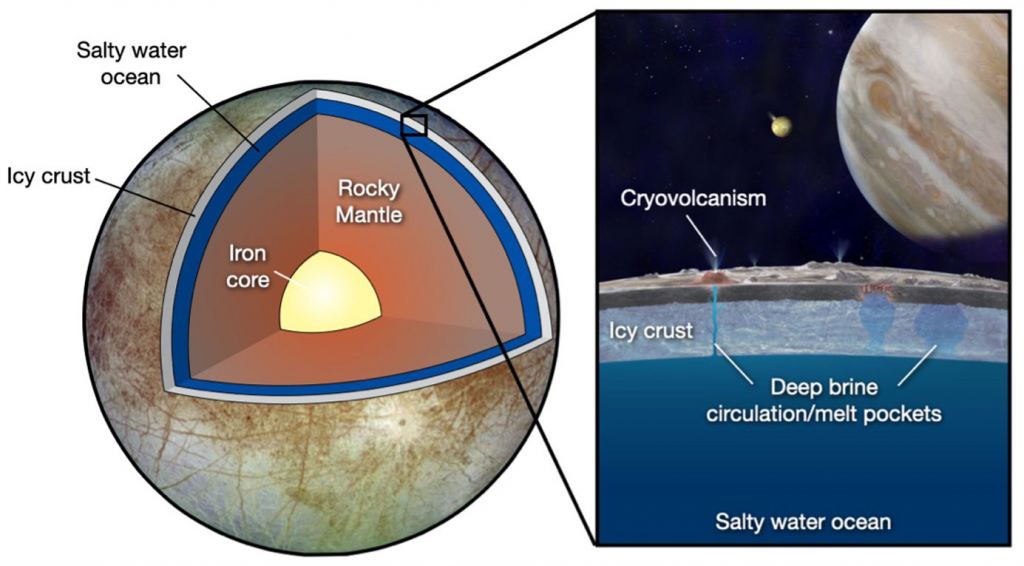
A recent study published in Cell Reports Physical Sciences discusses how researchers from the University of Washington (UW) and the University of California, Berkeley conducted experiments that measured the physical limits for the existence of liquid water in icy extraterrestrial worlds. The study focused on eutectics, or the lowest temperature that a salty solution can remain liquid before entirely freezing. This blend of geoscience and engineering was done to aid in the search for extraterrestrial life and the upcoming robotic exploration of oceans on moons of other planets.
“The more a liquid is stable, the more promising it is for habitability,” said co-corresponding author Baptiste Journaux, an acting assistant professor of Earth and space sciences at the UW. “Our results show that the cold, salty, high-pressure liquids found in the deep ocean of other planets’ moons can remain liquid to much cooler temperature than they would at lower pressures. This extends the range of possible habitats on icy moons and will allow us to pinpoint where we should look for biosignatures, or signs of life.”
The experiments used UC Berkeley equipment originally designed for the future cryopreservation of organs for medical applications and for food storage. For this research, however, the authors used it to simulate the conditions thought to exist on other planets’ moons.
Journaux, a planetary scientist and expert on the physics of water and minerals, worked with UC Berkeley engineers to test solutions of five different salts at pressures up to 3,000 times atmospheric pressure, or 300 megapascals — about three times the pressure in Earth’s deepest ocean trench.
“The new data obtained from this study may help further researchers’ understanding of the complex geological processes observed in these icy ocean worlds,” Journaux said.
This study is important since there are several missions slated to visit the moons of Jupiter and Saturn in the coming years: NASA’s Dragonfly and Europa Clipper, and the European Space Agency’s JUpiter ICy moons Explorer (JUICE).
Dragonfly
Part of NASA’s New Frontiers Program, Dragonfly is a rotorcraft currently scheduled to be launched in June 2027 and arrive at Titan in 2034. The rotorcraft itself is roughly the size of the Curiosity and Perseverance rovers on Mars, or about the size of a small car. Dragonfly will be the first powered aircraft to explore a planetary body in the outer solar system, as Ingenuity became the first powered aircraft on another planet when it first flew on Mars in 2021. Dragonfly’s science mission is scheduled to last two years, during which time the rotorcraft will perform “hops” around Titan’s surface, with one hop per full Titan day (16 Earth days).
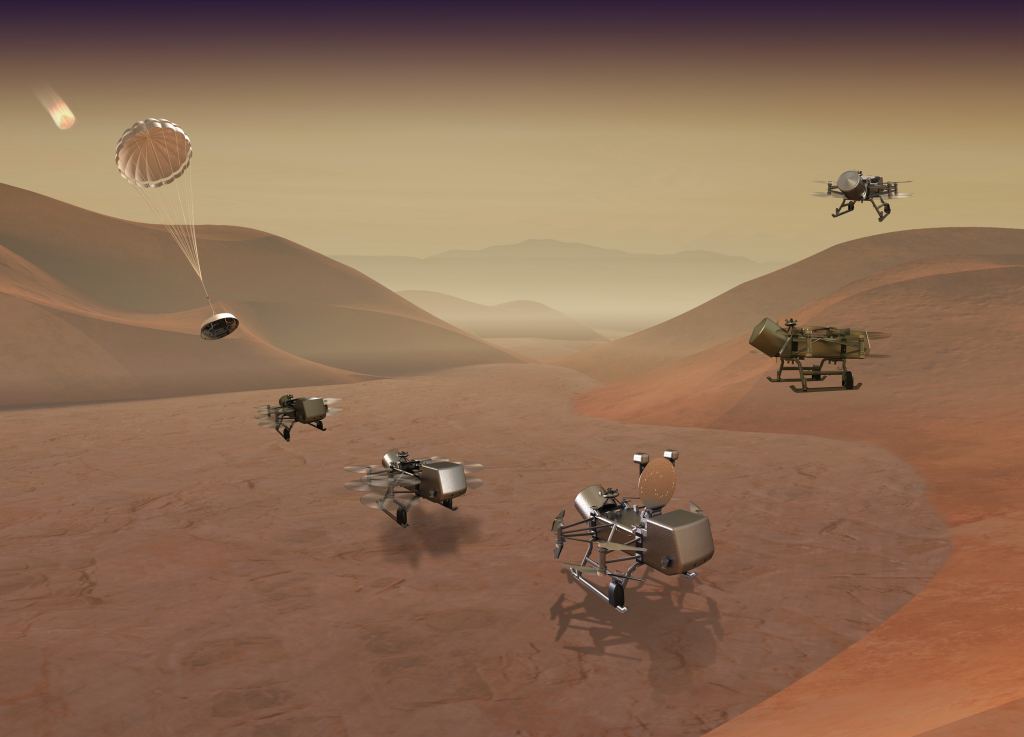
Europa Clipper
Funded under NASA’s Planetary Missions Program Office’s Solar System Exploration program, Europa Clipper is an orbiter currently scheduled to be launched in October 2024 and arrive at Europa in 2030. The spacecraft will be placed in a highly elliptical orbit around Jupiter to perform detailed reconnaissance of Europa and investigate whether the icy world could be habitable. The reason for the highly elliptical orbit is because of Jupiter’s very strong radiation that could literally fry a spacecraft if exposed for too long.
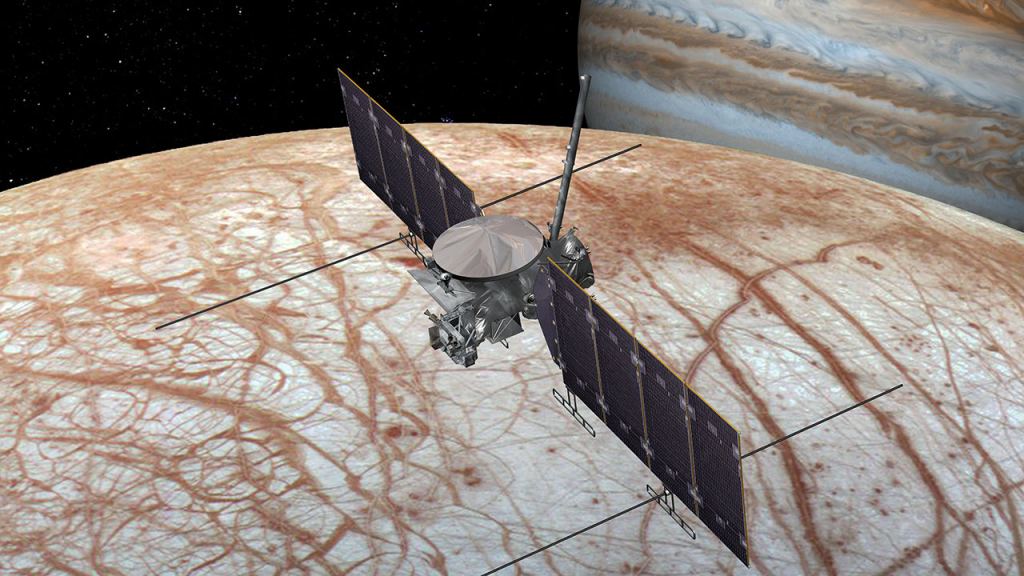
JUpiter ICy moons Explorer (JUICE)
JUICE will be the first large-class mission in the European Space Agency’s Cosmic Vision 2015-2025 program currently scheduled to be launched in April 2023 and arrive at Jupiter in 2031. The science mission calls for three years of making detailed observations of Jupiter and its three largest moons—Ganymede, Callisto, and Europa.
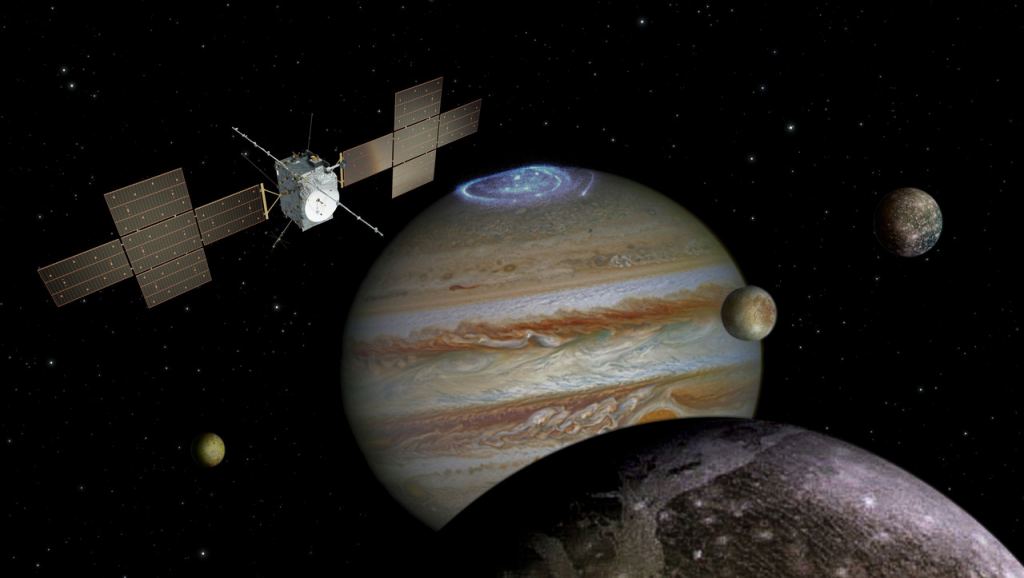
Does Europa harbor the conditions necessary for life to exist? If so, where in its vast ocean will we find it, or maybe in the ice itself? Only time will tell, and this is why we science!
As always, keep doing science & keep looking up!
Sources: University of Washington Press Release, NASA (1), NASA (2), National Oceanic and Atmospheric Administration, Britannica, Cell Reports Physical Sciences, Johns Hopkins University Applied Physics Laboratory, NASA JPL, European Space Agency, NASA (3)
Featured Image: This image, taken by the Galileo spacecraft in 1996, shows two views of Jupiter’s ice-covered satellite, Europa. The left image shows the approximate natural color while the right is colored to accentuate features. Europa is about 3,160 kilometers (1,950 miles) in diameter, or about the size of Earth’s moon. (Credit: NASA/JPL-Caltech)

